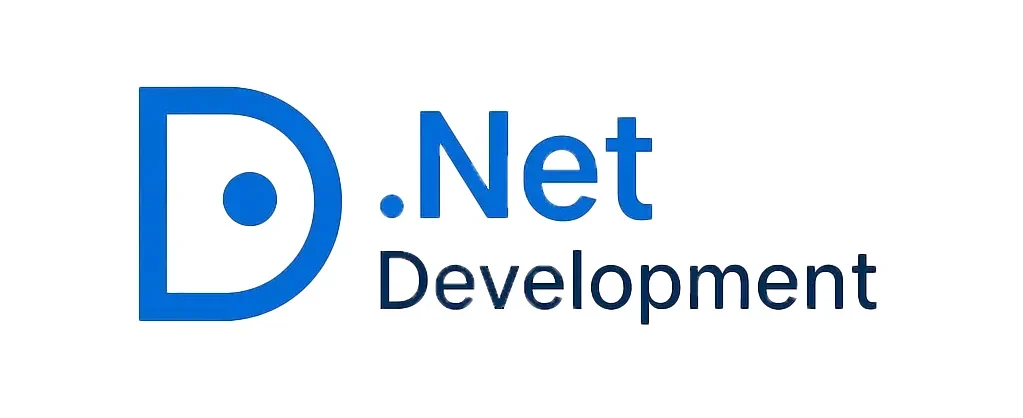.NET Development Cost : Complete Guide To Pricing In 2025
When planning a software project, understanding .NET development cost is essential for effective budgeting and decision-making. The demand for robust, scalable, and secure software solutions has skyrocketed, and .NET remains a top choice for businesses aiming to build high-performance applications.
What Is .NET Development?
.NET, developed by Microsoft, is a versatile framework for building applications across web, mobile, desktop, and cloud platforms. Its flexibility, security, and cross-platform capabilities make it ideal for businesses targeting diverse audiences. However, the cost of .NET development varies widely based on project complexity, team expertise, and other factors. Let’s break it down.
Key Factors Influencing .NET Development Costs
1. Project Complexity and Scope
The complexity of your application is a primary driver of .NET development costs. Simple applications, like informational websites, require less effort than complex systems, such as enterprise-level e-commerce platforms or custom CRMs. For instance:
-
Basic applications: These might include static websites or simple dashboards, costing between $10,000 and $30,000.
-
Mid-tier applications: Apps with moderate complexity, like e-commerce platforms with payment integrations, typically range from $30,000 to $80,000.
-
Complex applications: Enterprise solutions with advanced features like AI integration or real-time analytics can cost $80,000 to $200,000 or more.
2. Development Team Composition
The expertise and location of your development team significantly impact costs. You can hire in-house developers, freelancers, or an offshore .NET development company. Here’s how team composition affects pricing:
-
In-house developers: In the USA, senior .NET developers earn $100,000–$150,000 annually, increasing project costs.
-
Freelancers: Freelancers may charge $30–$100 per hour, but quality and reliability can vary.
-
Offshore teams: Companies in regions like India or Eastern Europe offer rates of $20–$50 per hour, balancing cost and quality.
3. Development Timeframe
The time required to complete a .NET project directly influences costs. A rushed timeline may require additional resources, increasing expenses. On average:
-
Small projects take 3–6 months.
-
Medium projects require 6–12 months.
-
Large-scale projects can take 12–24 months or more.
4. Features and Functionalities
The features you want in your application—such as user authentication, payment gateways, or third-party API integrations—add to the cost.For example:
-
Basic features: User login, basic UI, and simple database integration are less expensive.
-
Advanced features: Real-time chat, machine learning algorithms, or IoT integration demand specialized skills, and also it depends on techniques used into driving up costs.
5. Maintenance and Support
Post-launch maintenance, including bug fixes, updates, and scalability enhancements, is often overlooked but essential. Annual maintenance costs typically range from 15–20% of the initial development cost. For a $50,000 project, expect $7,500–$10,000 annually for upkeep.
Hidden Costs in .NET Development
Beyond the obvious expenses, hidden costs can creep into your budget:
-
Licensing fees: While .NET Core is open-source, some tools or third-party libraries may require licenses.
-
Cloud hosting: Hosting on platforms like Azure can cost $100–$1,000+ monthly, depending on usage.
-
Testing and QA: Rigorous testing ensures quality but adds 10–20% to the budget.
Cost-Saving Strategies for .NET Development
To optimize your .NET development budget :-
-
Use Agile Methodology: Agile development reduces risks and allows iterative progress, saving time and money.
-
Leverage Open-Source Tools: .NET Core and open-source libraries minimize licensing costs.
-
Outsource Strategically: Offshore teams in cost-effective regions can deliver quality at lower rates.
-
Prioritize MVP Development: Build a minimum viable product (MVP) to test the market before investing in advanced features.
Why Invest In .NET Development?
Despite the costs, .NET offers unmatched benefits :-
-
Scalability: Easily scale applications to handle growing user bases.
-
Security: Robust security features protect sensitive data.
-
Cross-platform compatibility: Build apps for web, mobile, and desktop with a single framework.
Regional Cost Variations In The USA
.NET development costs in the USA vary by region due to differences in living costs and developer salaries :-
-
San Francisco/Silicon Valley: High demand drives rates to $80–$150 per hour.
-
New York: Similar to Silicon Valley, with rates of $70–$130 per hour.
-
Midwest or Southern States: More affordable, with rates of $50–$100 per hour.
How To Estimate Your .NET Development Budget?
To get an accurate estimate :-
-
Define your project requirements clearly.
-
Consult with multiple .NET development companies for quotes.
-
Factor in hidden costs like maintenance and hosting.
-
Use tools like Trello or Jira to track project progress and avoid scope creep.
Conclusion :-
The cost of .NET development depends on project complexity, team expertise, timeline, and ongoing maintenance. By understanding these factors and leveraging strategies like agile development and outsourcing, you can optimize your budget without compromising quality. Whether you’re building a simple app or a complex enterprise solution, .NET’s versatility makes it a worthy investment for businesses aiming to stay competitive in the digital landscape.
For more insights on .NET development or to get a custom quote, contact a reputable .NET development company today!
I am Manish Kumawat, co-founder of Fulminous Software, a top leading customized software design and development company with a global presence in the USA, Australia, UK, and Europe. Over the last 10+ years, I am designing and developing web applications, e-commerce online stores, and software solutions custom tailored according to business industries needs. Being an experienced entrepreneur and research professional my main vision is to enlighten business owners, and worldwide audiences to provide in-depth IT sector knowledge with latest IT trends to grow businesses online.

